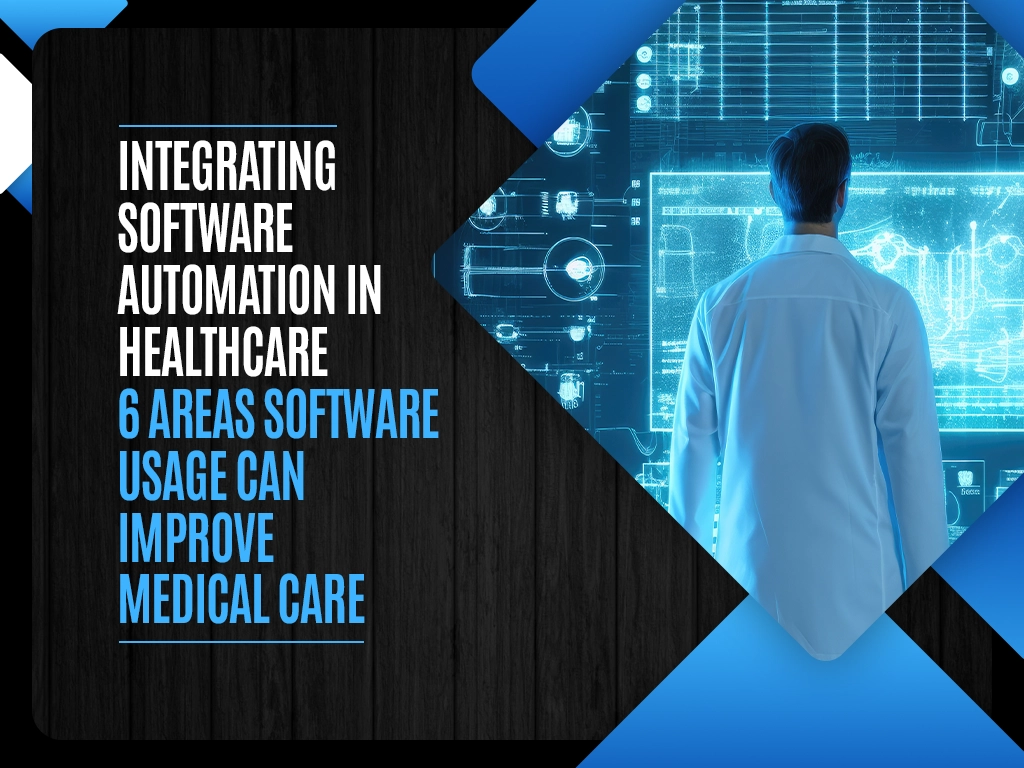Integrating Software Automation in Healthcare: 6 Areas Software Usage Can Improve Medical Care

In recent years, the healthcare industry has undergone a transformative shift with the integration of software automation. This wave of innovation extends beyond merely streamlining administrative tasks, reaching into the core of patient care delivery.
Software automation has emerged as a powerful and multifaceted tool, revolutionizing healthcare practices.
In this article, we delve into six critical areas where the integration of software automation stands poised to enhance and redefine the landscape of medical care substantially.
Hospice Care Management Software
Within healthcare automation, specialized software for hospice care management plays a pivotal role in ensuring compassionate end-of-life support.
Tailored to the unique needs of patients facing life-limiting illnesses, software for hospice streamlines care coordination, enabling healthcare providers to focus on patient interaction rather than administrative tasks.
Hospice care management software facilitates real-time communication among interdisciplinary teams, enhancing the holistic approach to patient care. Additionally, it eases the documentation of care plans, ensuring individualized attention.
The automation extends to bereavement support, efficiently tracking services for grieving families.
Ultimately, hospice care software embodies a commitment to human-centric care, prioritizing patients’ and their families’ comfort, dignity, and peace of mind during a challenging period.
Electronic Health Records (EHR)
One of the primary areas where software automation is making a substantial impact is the management of Electronic Health Records (EHR).
EHR systems have evolved to become central repositories of patient information, but manual data entry and retrieval can be time-consuming and prone to errors.
Automation in EHR not only reduces the administrative burden but also enhances the accuracy of patient data. Automated EHR systems can streamline the recording of patient information, including medical history, medications, and test results.
This instantly enables healthcare professionals to access comprehensive and up-to-date patient records, leading to more informed decision-making and improved patient outcomes.
Additionally, automated EHR systems contribute to better communication and coordination among healthcare providers, facilitating a seamless continuum of care.
Appointment Scheduling and Reminder Systems
Efficient appointment scheduling is crucial for healthcare providers to manage their workflow and optimize patient care. Software automation is vital in this aspect by providing robust appointment scheduling and reminder systems.
These systems not only simplify the scheduling process but also help in reducing no-show rates, ensuring that patients receive timely and necessary care.
Automated reminder systems can send notifications to patients via email, text messages, or mobile apps, minimizing the chances of missed appointments.
This improves the overall efficiency of healthcare facilities and enhances patient engagement and satisfaction.
Telehealth and Remote Patient Monitoring
Software automation has catalyzed the growth of telehealth and remote patient monitoring, especially in the wake of global events highlighting the importance of remote healthcare delivery.
Automated telehealth platforms enable healthcare providers to conduct virtual consultations, expanding access to medical care for patients in remote or underserved areas.
Moreover, software-driven remote patient monitoring devices allow healthcare professionals to track patients’ vital signs and health metrics in real-time.
This continuous monitoring can lead to early detection of health issues, proactive intervention, and reduced hospital admissions.
The integration of automation in telehealth not only improves accessibility but also contributes to a more patient-centric approach to healthcare delivery.
Medication Management
Ensuring proper medication adherence is critical to patient care, yet it remains a significant challenge. Software automation offers solutions to enhance medication management, from prescription to administration.
Automated systems can provide medication reminders, dosage instructions, and alerts for potential drug interactions, reducing the risk of medication errors. Pharmacies can also benefit from automation in medication dispensing, improving accuracy and efficiency.
Integrating healthcare providers and pharmacies through automated systems can enhance communication and coordination, resulting in a more synchronized and practical approach to medication management.
Clinical Decision Support Systems
Clinical decision support systems (CDSS) powered by software automation are becoming indispensable tools for healthcare professionals.
These systems analyze vast amounts of patient data, medical literature, and best practices to provide evidence-based recommendations at the point of care.
Integrating automation into decision-making processes, CDSS helps healthcare providers make more informed and timely decisions, ultimately improving patient outcomes.
CDSS can assist in diagnosing complex medical conditions, suggesting personalized treatment plans, and alerting healthcare providers to potential risks or complications.
This enhances the quality of care and supports healthcare professionals in staying abreast of the latest medical advancements and guidelines.
Wrapping Up
Integrating software automation in healthcare represents a transformative shift that promises to improve medical care across various dimensions. From enhancing administrative efficiency to revolutionizing patient care delivery, automation is reshaping the healthcare landscape.
As the industry continues to embrace technological advancements, healthcare professionals and organizations need to leverage the power of software automation to improve patient outcomes and the overall healthcare ecosystem.

